Day 2 of a three day tour combining the best of winter birding with some owls. It was meant to be cloudy but instead it was another glorious day – after a hard frost overnight it was bright and sunny with light winds again. We spent the day over in the Fens today.
It was a long drive over into the near edge of Lincolnshire first thing this morning, but it would be worth it. Once we got into the Fens, we started to see herds of swans in the fields, lots of Lapwings and flocks of Fieldfares. A few raptors were in trees by the road or hanging in the air – Kestrels, Common Buzzards, and one or two Red Kites. We spotted a couple of Little Grebes on the River Welland as we passed on the bank.
Our first destination for the day was Deeping Lakes. As we walked down towards the hide, we stopped to look across The Gully. There were a couple of people already there who got us straight onto a Long-eared Owl roosting deep in an ivy-covered tree the other side. There was just the one today and it was well-hidden. We could see most of its body, but its face was behind the ivy – we could just see an ear tuft, and occasionally one eye when it woke and shuffled.
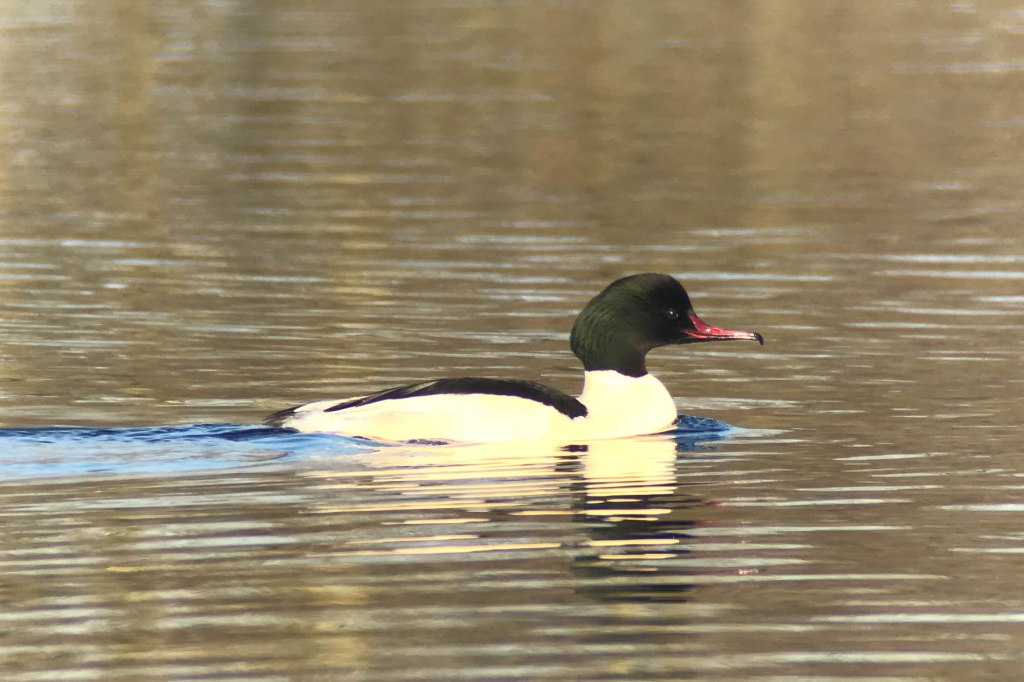
From the hide, we scanned the water. There were several Goosanders, mostly hiding behind the island, but one or two were out in the open. They were mostly smart males, looking resplendent in the low winter sunshine, a hint of pink to their bodies. One even surfaced right in front of the hide at one point.
There were Goldeneyes too. Over on the edge of the ice, two males were displaying, throwing their heads back. The two females with them looked unimpressed and swam off ahead of them. Like with the Goosander, after a while a nice male Goldeneye then appeared, diving in front of the hide.
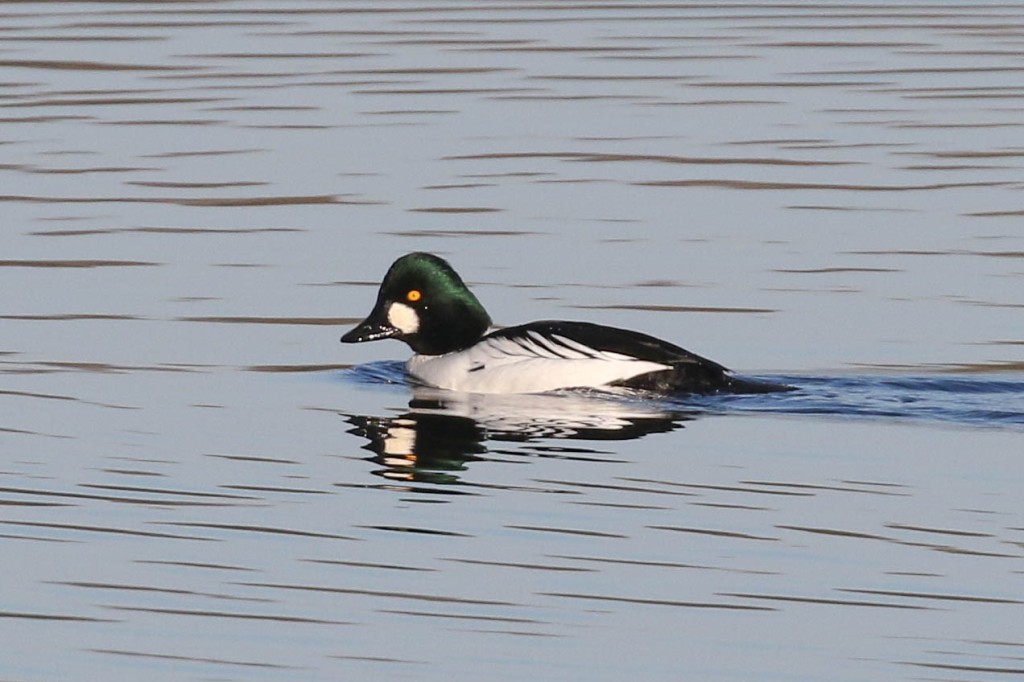
A Blackbird was alarm calling for several minutes in the ivy next to the hide while we were watching the ducks. It had probably found another owl! Unfortunately, despite trying different angles we couldn’t see what had attracted its attention, the vegetation was just too thick.
Back out of the hide, we got the scopes on the Long-eared Owl again from a different angle. It was even deeper in the ivy from here, but we were now looking straight at its face. Gradually, we were piecing together a composite view of a whole Long-eared Owl!
One of the group then spotted a Peregrine in a dead tree over the water a little further along. It was perched in the sunshine and we had a great view through the scopes, sunning itself, dozing. Stunning!
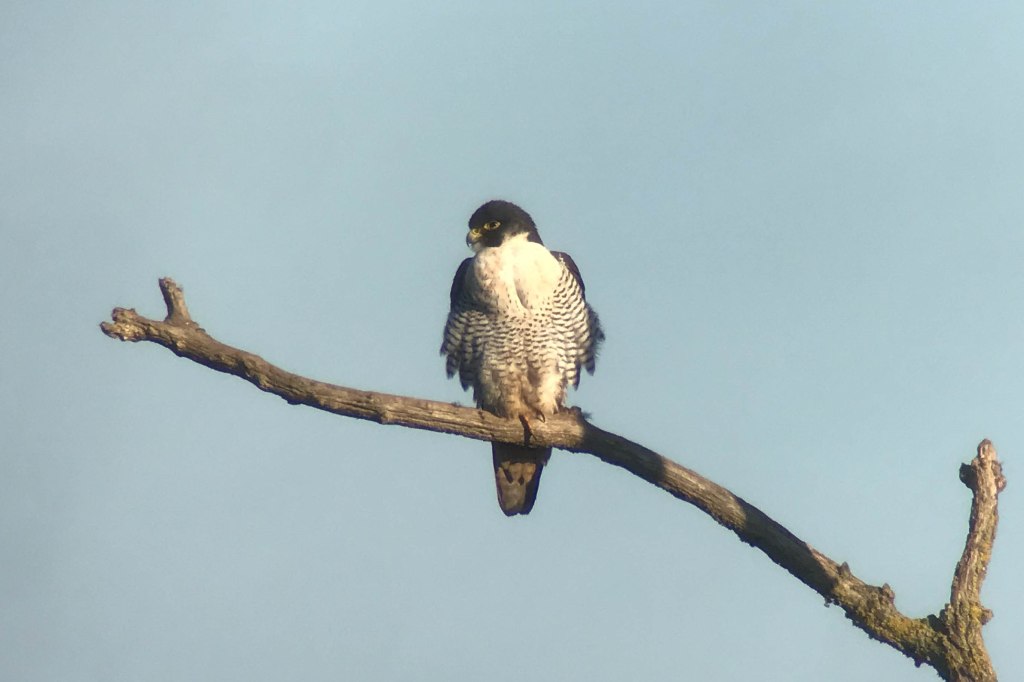
Eventually, we had to tear ourselves away from the Peregrine and we carried on round the lake on the path and out onto the riverbank beyond. A Little Egret flew past up the river. The Little Owl had retreated further in to the trees the other side, but eventually we found it. It was very well camouflaged in all the branches, but we could see it through the scopes. Two owls down and just half the morning gone!
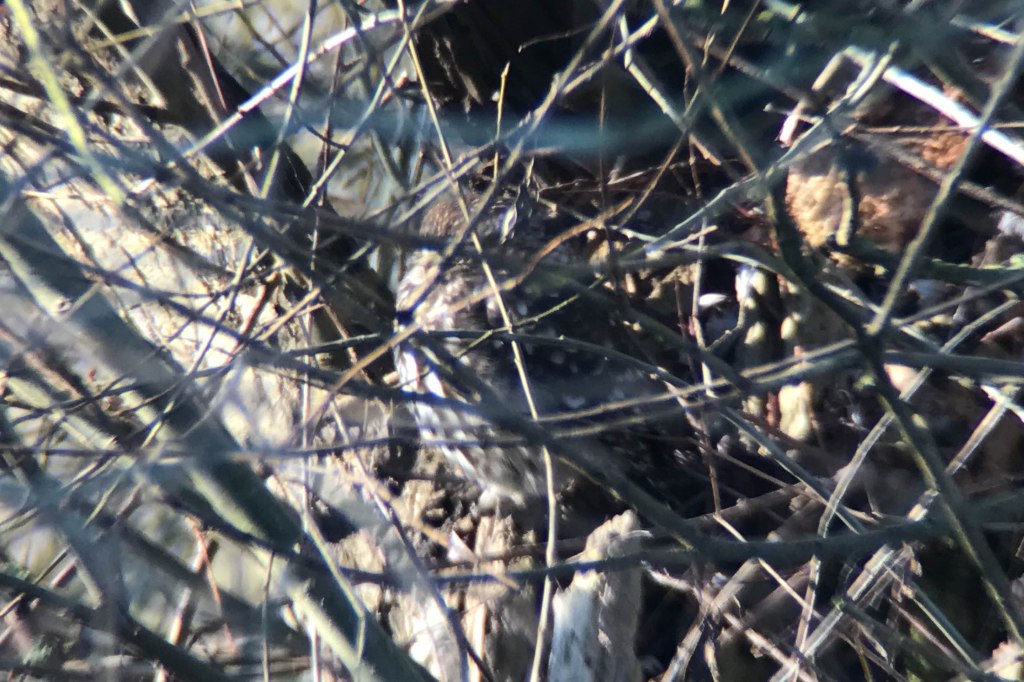
A Green Woodpecker was yaffling from further along the riverbank. Behind us, a Fieldfare landed in the top of a willow. As we walked back to the hide, there were lots of tits in the bushes along the path now. A couple of Long-tailed Tits flitted ahead of us. When we noticed some movement on the path further up, it turned out to be a Stoat. It kept running into the undergrowth and then back out onto the path. Great to watch.
Back at the hide, the Peregrine was still dozing in the same dead tree. We decided to have another look at the Long-eared Owl to see if it had moved. Not much, but it had turned around and a little more of it was visible now, particularly when it woke, yawned and preened for a minute, before going back to sleep.
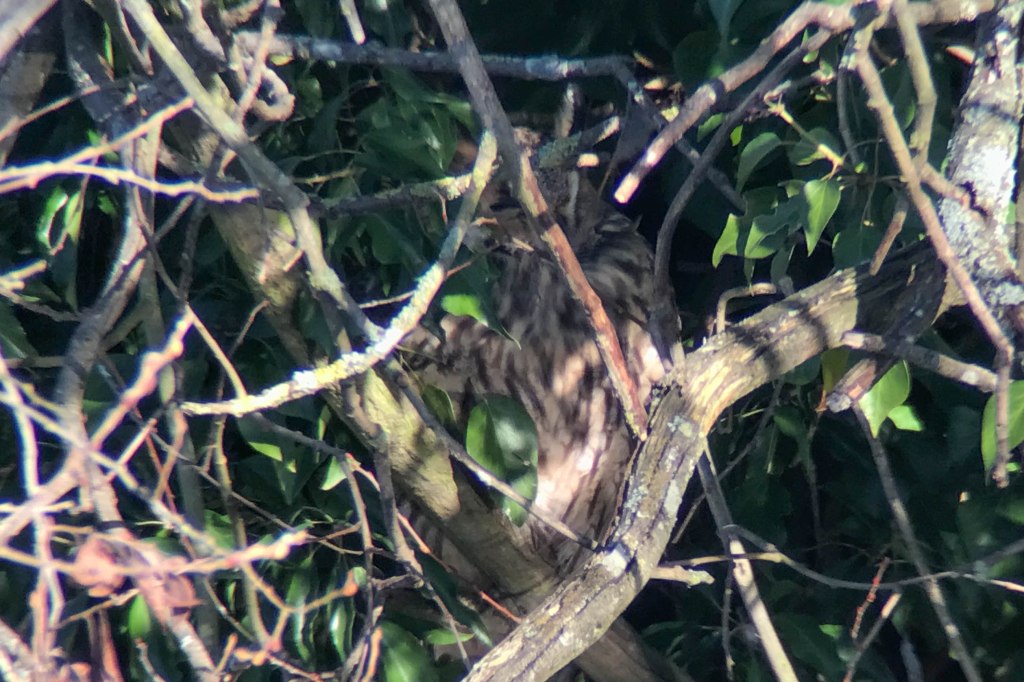
There had been a drake Ring-necked Duck on some gravel pits just a few miles north so we drove round there for a quick look next. The pits were still largely frozen, but as we drove past we could see some ducks out in the middle. We parked and walked back along the verge. There was no access and it was difficult viewing particularly where they were today, looking into the sun through a thick hedge.
Despite the difficulties, we quickly picked up a drake Red-crested Pochard on the water. Then we looked carefully through the Tufted Ducks as they moved back and forth. We could only see a few at a time through a gap in the branches, but we still found the Ring-necked Duck, a smart drake. We got it in the scope, but just before everyone got a look suddenly all the ducks took off. A Red Kite drifted low over the hedge, and circled above our heads.
Some of the Tufted Ducks landed again, but the Ring-necked Duck was not with them. We drove further up, but we couldn’t see any ducks on the other pits by the road – they had presumably dropped down out of sight, possibly in Tallington Lakes Leisure Park the other side of the main road.
Heading on south into Cambridgeshire, we called in at Eldernell for lunch. We were a bit later than planned, so we didn’t have much time, but it was a bit disappointing today. There were several Marsh Harriers over the reeds in the distance but no sign of any Cranes out on the marshes opposite the car park. There were no Short-eared Owls in their usual roost spot in the nearby hedge either today. But then a Kingfisher appeared on the edge of the ditch below the bridge an we had a nice view through the scopes by way of compensation.
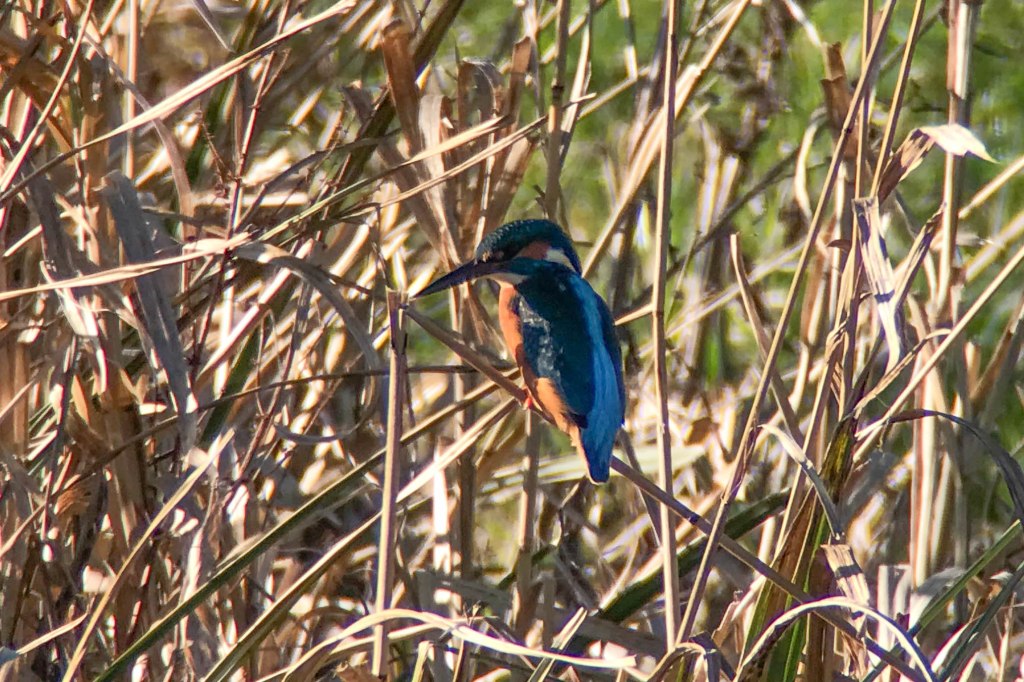
The destination for the remainder of the afternoon was Welney, so after lunch we moved on. As we got closer, we could see lots of swans in the fields and stopped briefly to admire one smaller group in a recently harvested sugar beet by the road. We could see one or two Bewick’s Swans in with the more numerous Whooper Swans. There was a massive herd in the fields further back and while we watched, more flew in to join the ones in front.
There were lots of House Sparrows in the brambles between the car park and the visitor centre at Welney, and we quickly found a couple of Tree Sparrows in with them. While we stopped to use the facilities, we also saw one or two Tree Sparrows coming to the feeders in front, along with several Reed Buntings.
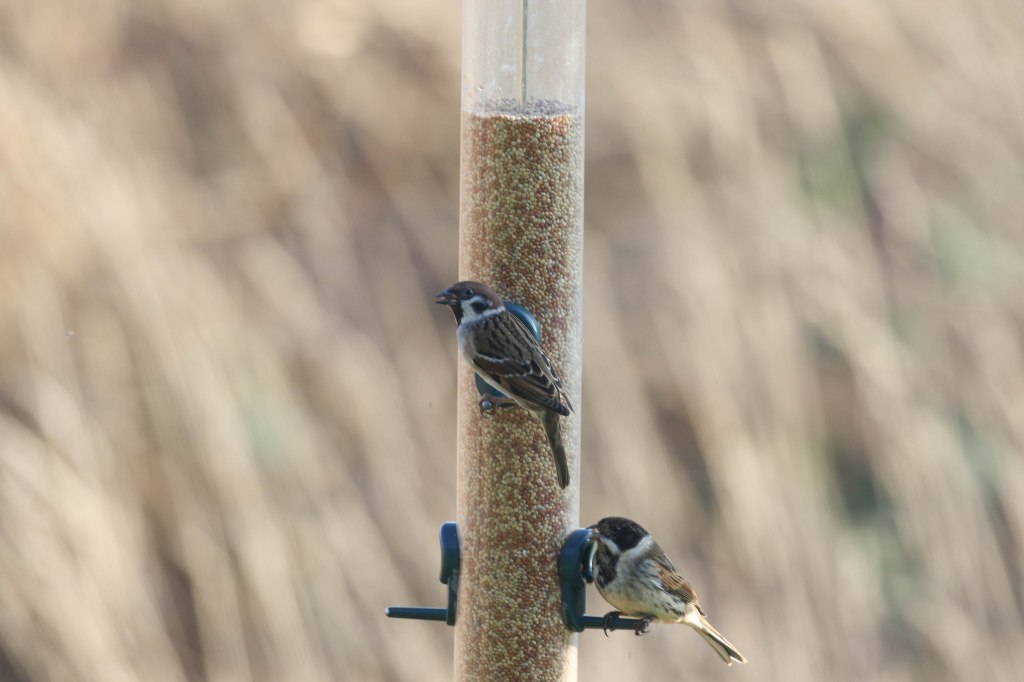
As we got upstairs, a shout went up that five Common Cranes were just flying off from Lady Fen. We arrived just in time to watch them go from the balcony. Then we walked across the bridge and over to the Observatory.
The nine Tundra Bean Geese were loafing on one of the grassy islands right in front, and we had great views through the scopes. We could see their day glo orange legs, and the bright orange band round their bills. They swam across to the next island in line, and walked out onto the edge to preen. They seemed perfectly happy there, but when we next looked over they had taken off and we watched them fly off north.
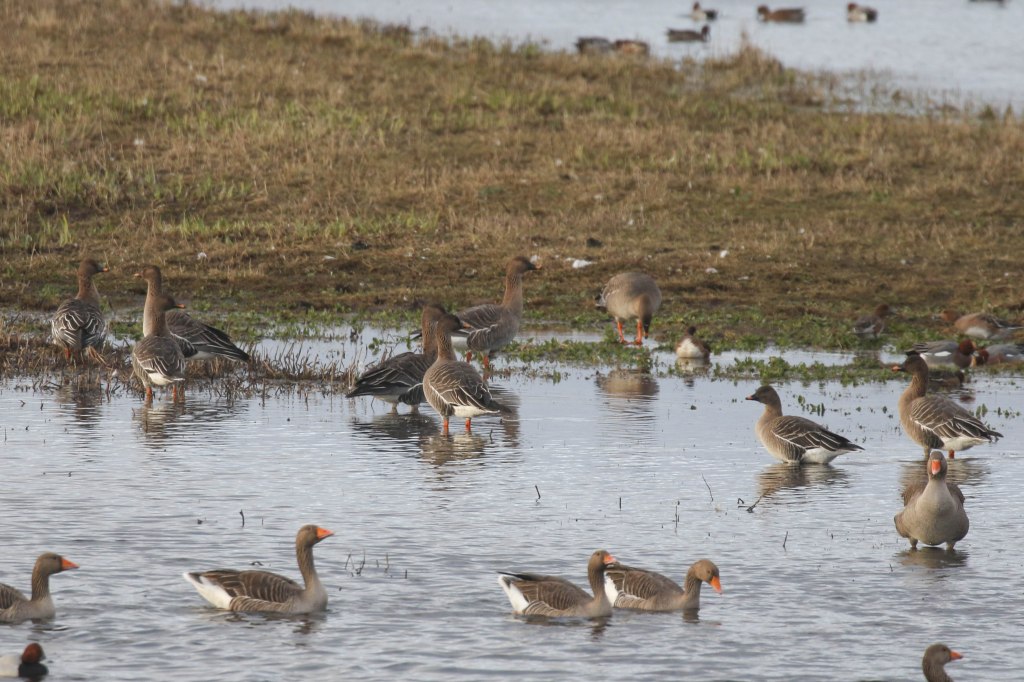
There were lots of Common Pochard right in front of the hide, mostly drakes. They are smart ducks, particurarly with the late afternoon sunshine catching their burnt orange heads and deep red eyes. It is rare to see them so close as here, so they definitely drew some admiring glances. There were one or two Tufted Ducks with them.
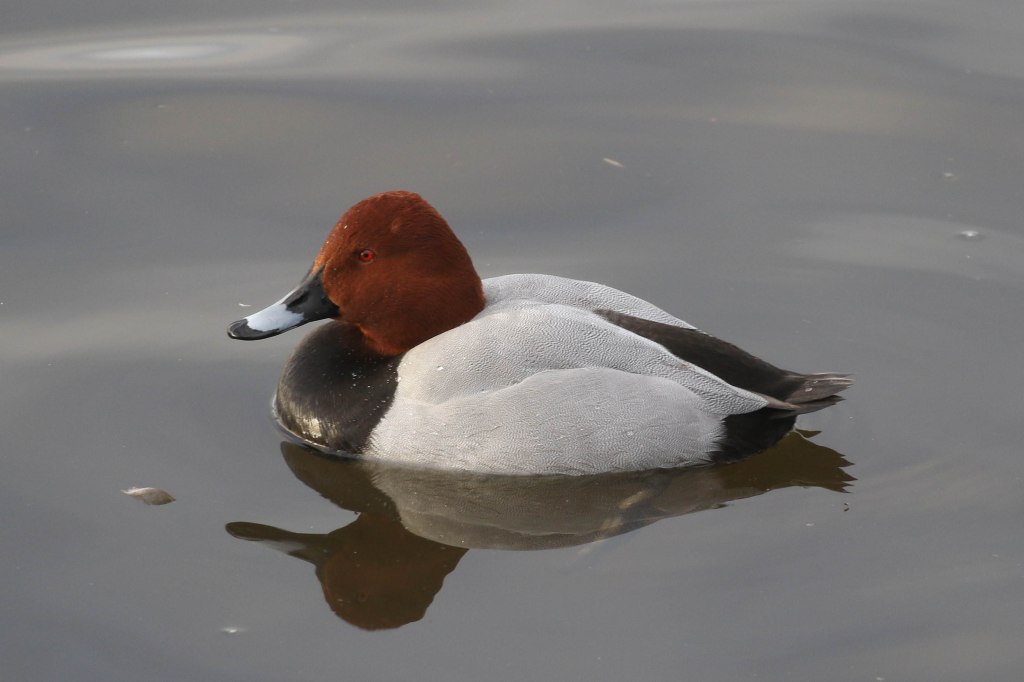
Otherwise, there were lots of Wigeon out on the washes, along with Mallard, Teal, and a few Shoveler. Looking through carefully, we found several Pintail too.
A few Whooper Swans were already in, presumably the resident birds, one with a damaged wing. Another family of five Whooper Swans flew in to join them. The Bewick’s Swans tend to stay out on the fields during the day, but we did find a family of four Bewick’s Swans over towards the back of the washes too.
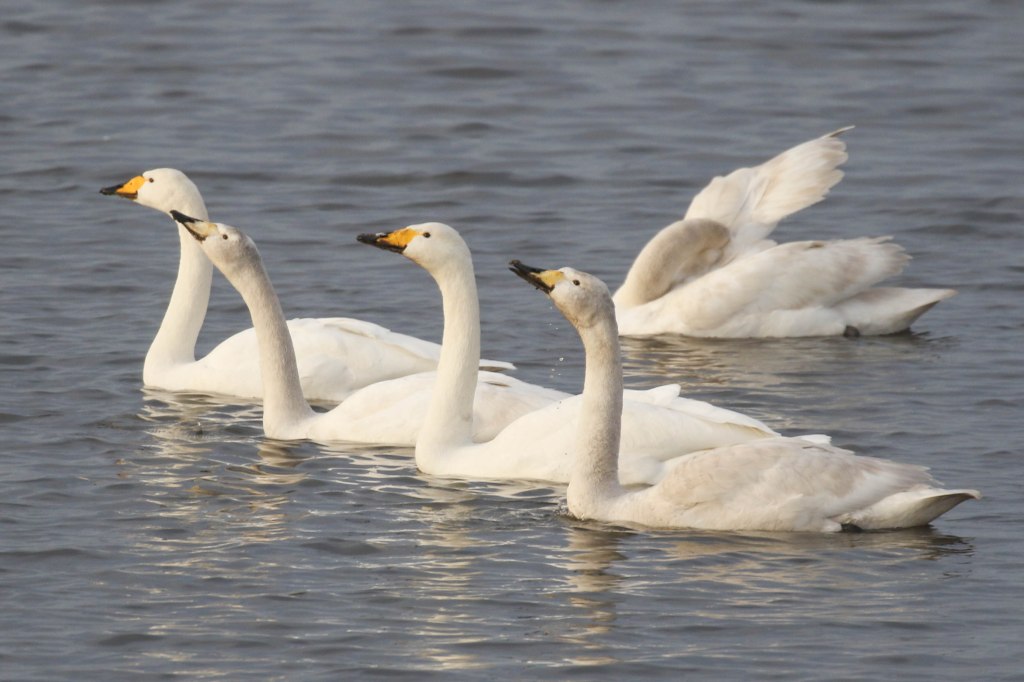
There were a few waders out here too, particularly a good number of Common Snipe around the islands in front. A few Black-tailed Godwits flew past, but there were lots more feeding in the shallow water away to the left, behind the reeds. Gulls were starting to fly in to roost, and we found a couple of Lesser Black-backed Gulls here now which were new for the trip list.
Some of the Whooper Swans swam in, right up in front of Observatory, and it was great to see them so close up. The ducks became increasingly excited, swimming round in circles. It was not long until the scheduled 3.30pm afternoon swan feed so we decided to stay to watch. We were surprised that no more swans flew in – and only about half a dozen of the Whoopers and two Mute Swans actually came to be fed today. Presumably the others weren’t hungry or were finding plenty of food in the fields.
It had clouded over by the time we got back out. We walked back over the bridge and out to the edge of Lady Fen. A Short-eared Owl appeared, hunting low over the grass. It dropped down onto a very large molehill, but by the time we got the scopes up it had disappeared. A two eared-owl day!
Two Cattle Egrets were in with the sheep in the next field over, so we walked over to look at those next. In the absence of any cattle, they seem to have adopted the sheep here now – Sheep Egrets?! There were several Grey Herons in with the sheep too and a couple of Brown Hares.
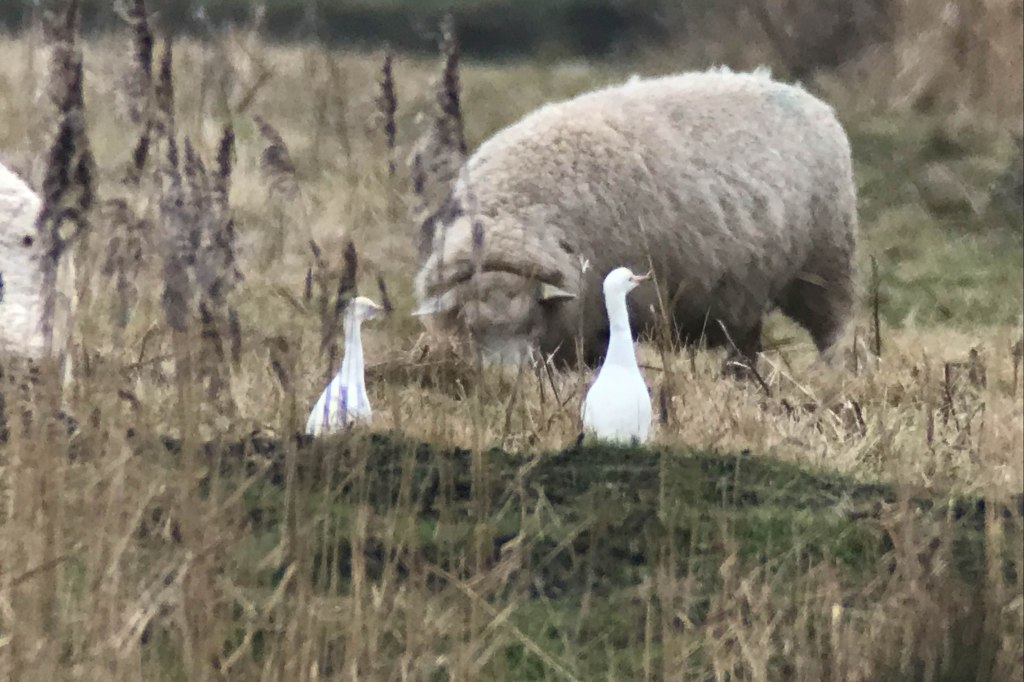
One or two Marsh Harriers drifted over, coming in to roost. Looking back behind us, presumably the same Short-eared Owl came up again and flew round low over the grass.
The light was starting to go now, and we had a long drive back, so we decided to call it a day.
















